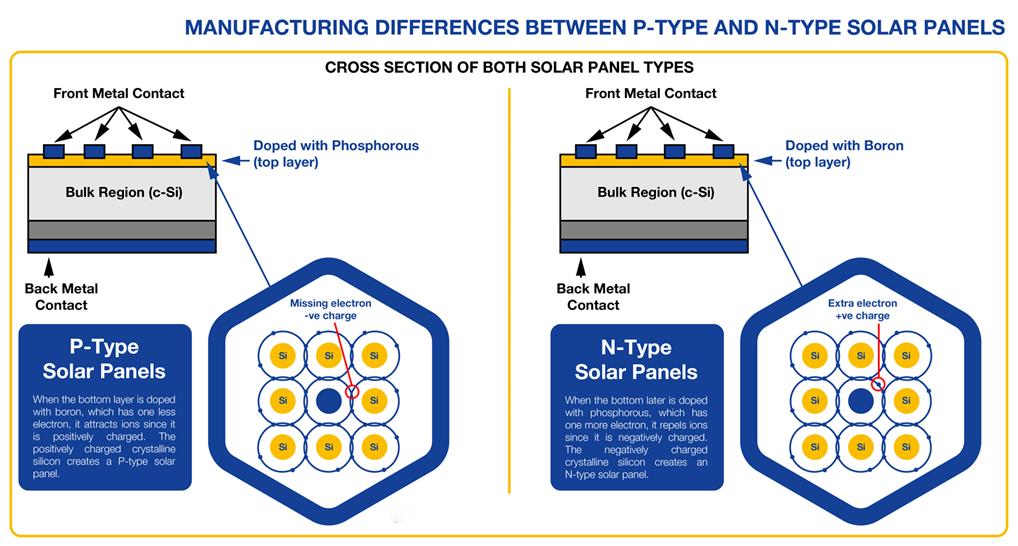This article was last revised in 225 Days ago, some of its contents may have changed. If you have any questions, you can ask the author。
Five fast facts to bring you across all things N-type.
FACT #1: N-type solar cells were developed before P-type
The first solar cell was developed in 1954 – and it was in fact an N-type cell. So why did P-types become so popular?
When solar PV technology was starting out, most of it was being used by space agencies. In space, P-type cells proved to be more resistant to radiation damage than N-types. Hence, more focus and resources were put on P-type cell development, leading to their dominance in today's market.
FACT #2: N-type cells are more efficient than P-type
One of the main differences in the engineering of N-type panels vs P-type panels is their 'doping’. Doping refers to the addition of chemicals to the crystalline silicon to promote power production.
An N-type solar cell is doped with phosphorus, which has one more electron than silicon, making the cell negatively charged (hence the 'N' in N-type).
A P-type cell is doped with boron, which has one less electron than silicon, making the cell positively charged (the 'P' in P-type).
When boron is exposed to light and oxygen, it causes Light Induced Degradation (LID). This happens as soon as solar panels are installed and decreases anywhere between 1% and 3% depending on the brand of the panel.
N-type panels don't use boron and therefore aren't affected by LID. It means better efficiency and improves the useful life of the panel.
FACT #3: N-type cells are more expensive than P-type – however this is expected to change
The downside to N-type panels in today's market is cost. They are more expensive to make and therefore more expensive to buy. With more focus and resources on P-type development, they quickly became more cost effective to produce for manufacturers and cheaper to purchase for end users. Investment into N-types was left behind.
FACT #4: N-type are projected to take over P-type in market share by 2024/25
Industry estimates suggest that N-type panels will be the solar industry's dominant technology by 2024/25 as engineering and manufacturing processes evolve and costs come down.
For a simple explanation of the manufacturing differences between the N-type and the P-type, check out our infographic:
